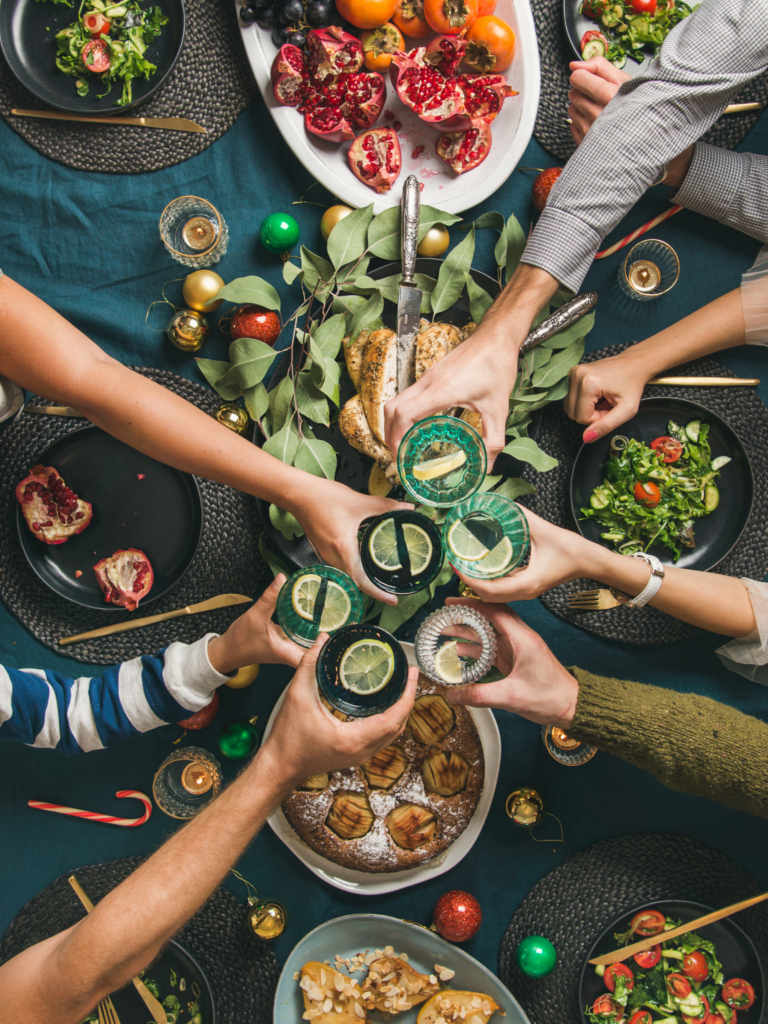A Story of Tamales
Meet Kimberly.
Latin America is a large, diverse region, full of rich cultures, ancient traditions, and delicious food. There are the pupusas from El Salvador, a handmade fried corn tortilla stuffed with cheese, beans, or pork. Arroz con gandules, from Puerto Rico, is fried rice mixed with pigeon peas and pork. Honduras has carne asada, a popular barbecued meat dish. Pepian is a traditional Guatemalan meat stew. And then we have my personal favorite, the classic Mexican tamales.
Hispanic Heritage Month
Growing up in the United States, we sometimes do not realize the identity crisis most Hispanic and Latinx young people go through. Moments like Hispanic Heritage Month are a time when part of our identity is not suppressed but celebrated. It not only gives us a sense of pride, but also allows us to gain confidence in being able to create spaces wherever we go in our endeavors. Hispanic Heritage Month is an opportunity to share with others and empower your community members in the rich diversity of Hispanic and Latinx food and culture.
My Food Story
My parents come from humble beginnings. They both grew up in small rural agricultural towns in Puebla, Mexico where they worked caring for farmland and animals. They had small simple meals that consisted mainly of beans, tortillas, and to spice things up, a good salsa. When there was a big celebration like a marriage or a birthday, they would eat festive dishes like mole (a sauce consisting of a variation of dried peppers and spices like cinnamon and cloves, served with either chicken or turkey and rice), pozole (a stew made of hominy and pork), and of course tamales.
My parents, loyal to their culture, made sure to expose my siblings and I to these important dishes growing up in the United States. Our everyday meals were simple, prepared with fresh ingredients and from scratch everyday. They would range from eggs sautéed with tomatoes and slices of jalapeños to boiled beans with herbs like epazote, “gorditas” which are thick handmade tortillas topped with salsa and cheese and served with rice.
Sharing a meal together as a family everyday was my parents' way of teaching my siblings and I the value of sharing with others the fruit of your work. For us, the food we ate was like a form of communication stating ‘this is what I have, it may not be much but I share it with you with love.’
When tamales were on the menu, I knew something important was going on.
Food always brought us together through the good or the bad. For my family, our favorite traditional meal is tamales. If you got a new job, there were tamales to celebrate. When you earned good grades in school, there were tamales for you. When there was a birthday, it's a great excuse to gather and have tamales. If there was a loss in the family, we shared tamales to comfort. When it was time to fundraise, we would sell what we knew best: tamales.
Depending on which region of Mexico you are in, tamales come in different colors, shapes and sizes. The wrapping needs to be resistant, flexible, and most importantly, accessible- because when you are making tamales, you are making a lot of them. The main wrappings used are corn husks or banana leaves. The tamale dough consists of nixtamalized corn (corn that has been soaked in limewater). And the filling is traditionally a meat with either a green or red sauce depending on your combination of ingredients, like dried red peppers, green jalapeños, and green or red tomatoes. Honestly, the possibilities of fillings are endless. I have eaten tamales filled with black beans, deer meat, traditional mole, jalapeños slices, and cheese.
Tamales can also be dessert!
A popular variation of tamales is where you add sugar or condensed milk to sweeten the dough along with an optional food coloring (usually pink) for aesthetic purposes. The filling can be a variation of raisins, pineapple, nuts, and coconut. You traditionally wrap these in corn husks.
Making tamales takes a lot of work. You need time and patience to make and wrap each of them individually and then wait for them to cook. So the joy and excitement that comes afterwards with sharing a piece of my heritage with others and seeing how they enjoy them brings a fulfilling feeling to me personally.
Something for everyone.
Something great about tamales is that they are naturally gluten free and they can be vegan friendly by filling them with your favorite veggies or beans. Food allergies among children of all races or ethnicities are increasing in the United States. In order to share our dishes with others, we can list the ingredients used for each dish so that they are clearly visible for our food allergy community members navigating through what to eat. When preparing meals try to be conscious about cross contamination by washing utensils between uses. In reality we are not going to be able to accommodate everyone. But we can be aware and educate ourselves about common dietary restrictions like what gluten free means. Don't be shy about getting to know if your guests have dietary restrictions. It is best to accommodate them and make them feel welcome and included.
Our culture is beautiful, we are a joyful heritage full of love and known for its hospitality. Together we can work towards creating more inclusive environments for our food allergy community, so there is something for everybody. And that in itself is a celebration.



